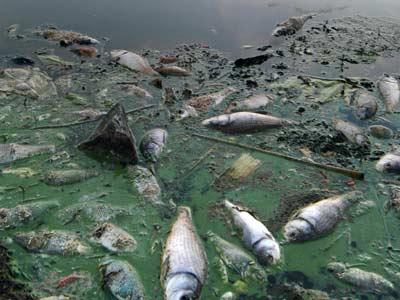Olivia Malvebo
Acid Rain: Why Should I Care?
According to an article from National Geographic, acid rain describes any form of precipitation with high levels of nitric and sulfuric acids. It can also occur in the form of snow, fog, and tiny bits of dry material that settle to Earth. Rotting vegetation and erupting volcanoes can release chemicals that cause acid rain, but the major cause of acid rain is human activities. The biggest of those activities would be the burning of fossil fuels by coal-burning power plants, factories, and vehicles (see Figure 1).
 |
Figure 1. shows the burning of fossil fuels for industrial purposes. The harmful chemicals travel into the atmosphere in the form of smoke.
|
When us humans burn fossil fuels, sulfur dioxide (SO2) and nitrogen oxides (NOx) are released into the atmosphere. These chemical gases will mix with water, oxygen, and other substances in the atmosphere to form mildly acidic solutions; sulfuric and nitric acid. Winds may spread these solutions across the globe, and will come down to Earth's surface as acid rain. When it reaches Earth's surface, acid rain flows across the surface in runoff water, enters water systems, and sinks into the soil (see Figure 2).
 |
| Figure 2. shows the process of what causes acid rain, and where it ends up. |
According to an article from USGS, pure water has a pH of about 7, and normally, rainfall is somewhere around 6 (see Figure 3 for the pH scale).
Acid rain, however, usually has a pH of around 5, but can be as low as 4. This is not only unhealthy, but is highly dangerous to various ecological environments. Acid rain has many negative ecological effects, but none is greater than its impact on aquatic environments such as lakes, streams, and wetlands. Acid rain makes bodies of water acidic and causes them to absorb the aluminum that comes from the soil and goes into lakes and streams. This combination makes waters toxic to marine life (see Figure 4).
 |
| Figure 3. shows the pH scale. |
 |
| Figure 4. shows dead fish; dead marine life, and poisoned water, due to acid rain. |
 |
| Figure 5. shows a dead forest, due to the pollution of the soil caused by acid rain. |
Acid rain penetrates deeply into the fabric of an ecosystem, changing the chemistry of the soil and streams and greatly reducing the space where certain plants and animals can survive. Because there are so many changes, it takes many years for ecosystems to recover from acid rain.
The only way to fight acid rain is by restraining the release of the pollutants that cause it. This means burning fewer fossil fuels. Individuals and societies can also use alternative energy sources, and steer away from fossil fuel combustion. According to an article from the Environmental Protection Agency (EPA), many governments have tried to restrain emissions by cleaning up industry smokestacks and promoting alternative fuel sources. These efforts have had mixed results, but even if acid rain could be stopped today, it would take many years for its harmful effects to disappear. To help lakes and other bodies of water recover faster from acid rain, limestone, a naturally occurring basic compound, can be added can be added to acidic lakes to "cancel out" the acidity (see Figure 6).
| Figure 6. shows two men liming a lake, or spreading limestone into the lake to "cancel out" the acidity. |
This process, called liming, has been used mainly in Norway and Sweden. It tends to be expensive, has to be done repeatedly in order to keep the water from returning to its acidic state, and is considered a short-term solution in only specific areas, rather than an effort to reduce or prevent pollution. Like many environmental problems, acid rain is caused by the actions of billions of people. Therefore, each individual can also reduce their contribution to the problem by conserving energy, since energy production is the largest cause of the acid rain problem.
In conclusion, people must take individual action, along side the world's industries, and other producers of nitric and sulfuric acids, causing acid rain. If we do not, there will be continuous consequences that not only us humans, but earth itself and all living things inhabiting it will suffer for.
Great use of pictures in text, all necessary components were addressed in the essay same with hyperlinks. Even better if there was bibliography
ReplyDeleteWWW:
ReplyDeleteVery informative
Concise
Point is clear
Labeled relevant pictures
Use of hyperlink
EBI:
Maybe add a bibliography
Overall very good
WWW: Lots of pictures that were well labeled ; good hyperlinks when needed ; point clear and thesis statement upheld ;
ReplyDeleteEBI: sources missing ; needs a better intro ;